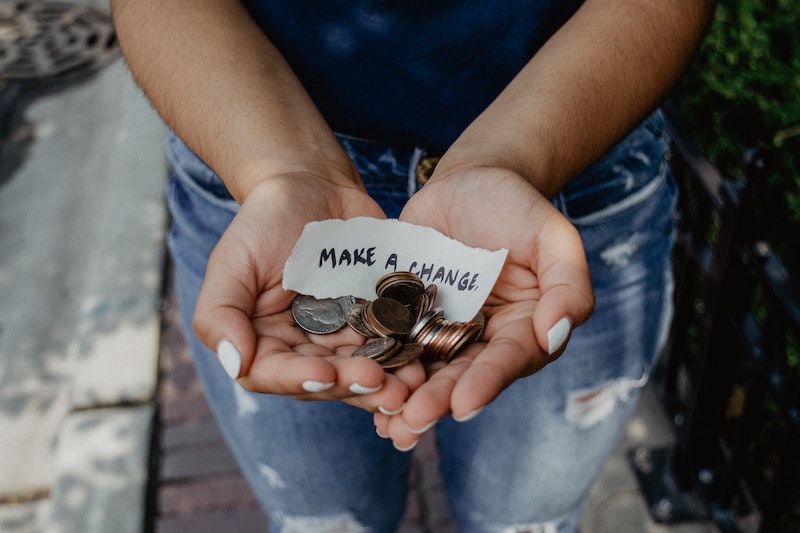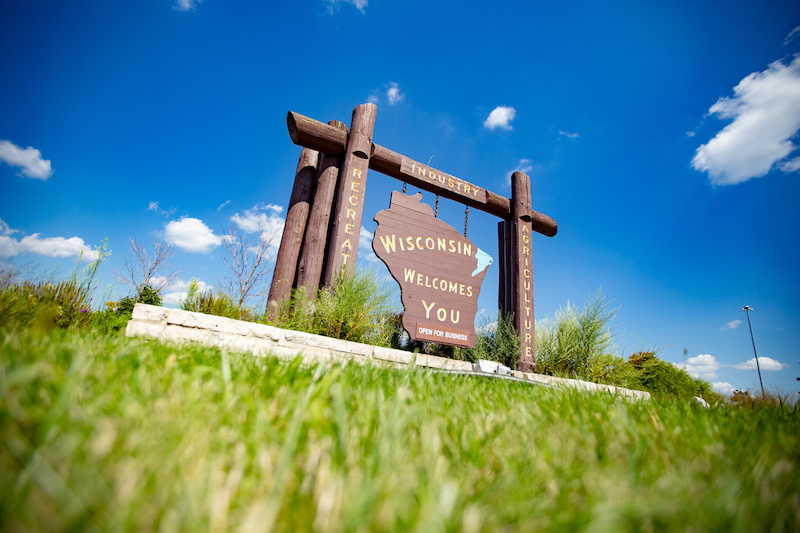
Are we really all in this together?
A few weeks ago, I was talking to a friend about Madison’s elementary schools.
“Have you been to the far west-side elementary schools? One of them has 70-inch TVs mounted in every classroom because one of the parents owns an appliance shop and donated them.”
Meanwhile, in the elementary schools on the far-east side of town, teachers share TVs and overhead projectors on rolling carts from the 90s and pass around one iPad per three classrooms. And those iPads came about through a major fundraising effort.
I threw out a wild suggestion.
“Why don’t the west-side Madison elementary kids fundraise for the east-side Madison elementary kids, and vice versa?”
My friend said that no one would participate in a fundraiser like that because none of the money they raised would go directly to helping their own kids’ education and neighborhood.
Of course. It’s rational. We all have a self-protective instinct. But this brief interaction stood out to me like a metaphor for the near-sighted way we define community, and the ways we let physical proximity define who we care about.
Our cities were segregated by design. If you don’t know what I’m talking about, leave this blog and start googling, because I believe understanding the history of urban and suburban neighborhood segregation in America is the most important thing you can do right now. But here’s the world’s shortest summary of 150 years (and counting!) of racist oppression: Federal, state, and local laws limited the housing options for Black, immigrant, and low-income Americans to ghettos with poor housing stock and predatory real estate speculators, preventing these families from accumulating wealth and preventing outside investment or economic development.
And then, on top of cities deeply segregated by race and wealth, we built a public education system funded by property taxes.
From the beginning, we designed a system where the ZIP code of your birth would determine your opportunity in life.
But our communities are ecosystems. And in an ecosystem, when you deprive one area of resources, the entire ecosystem suffers.
The pandemic is finally forcing us to reckon with the dire consequences of this unequal system we have built.
Well, sort of.
Despite the messages we may share on social media signaling our sudden awareness and conviction about social justice, many of us are still just looking out for ourselves. We’ve all heard by now that the pandemic is having a disproportionate impact on communities of color, and we throw around phrases like, “We’re all in this together,” even when we hole up in our homes and order groceries to be delivered by someone who is likely to have more risk factors than us.
We say, “Let’s come together as a community and support each other,” as we advocate for expanded sidewalk cafes in the most gentrified neighborhoods to keep restaurants alive, while hospitals turn away COVID patients who don’t have insurance.
We live in a time when the statement, “Everyone in my city deserves to eat at least one meal per day,” is a political position.
We have a failed understanding of what community really means.
Like the parents in my school fundraiser example, most White middle- and upper-class folks are only truly interested in supporting the communities they live in. And thanks to 150 years of de facto segregation, that means their definition of community extends only to people who share their socioeconomic status and, most of the time, their race.
You’re seeing families with means opt for pod-schooling, where a few families band together to hire a private tutor—at a time when there are not nearly enough teachers to go around. Severe overcrowding in classrooms was a major problem before the pandemic.
These families feel a sense of community by banding together, but they’re investing in themselves at the expense of students who can’t afford a similar arrangement.
A study from Carnegie Mellon and MIT in May found that both poverty and race affect young people's access to the Internet. As families who can afford it snap up all of the available private teachers, other families are just struggling to get their kids online to participate in virtual classes.
As a society, we’ve defined everything that has to do with raising a child—from pre-conception, through pregnancy and infant care all the way through college attendance—as an individual responsibility, 99 percent of which falls on mothers, instead of a community responsibility. That attitude trickles down from a patriarchal government that routinely silences women’s voices.
By abdicating any communal responsibility in nurturing, raising, and educating the next generation, we guarantee that gaps in health, income, and life expectancy will widen, and we also damage all of our futures.
We set ourselves up for disasters like this one, whose economic impact will be felt for years to come at every level of society—except the well-insulated billionaire class. (Let’s eat them.)
“We cannot thrive as a nation when the factors that contribute to good health are available to some and denied to others,” wrote representatives from UW’s School of Public Health in a written testimony to the U.S. House of Representatives during a public hearing on the impact of COVID-19 on communities of color.
Very few of us would argue with that statement. But the decisions we make? They indicate otherwise.
We’re not living by our values when we only invest in “community” support that benefits us, either by creating resources we will use or by giving us recognition.
We have a warped sense of what is an urgent problem in our communities.
In Madison, we’re creating streateries to save our restaurants, and we’re limiting car traffic on streets to allow more room for pedestrian and bike traffic—but what steps are we taking to protect low-income working mothers in essential jobs?
“Instead of bearing witness to mass death as a moment of reflection, many urban advocates are using the coronavirus as an opportunity to accelerate their pre-pandemic agendas—agendas which ignore the issues that made COVID-19 more catastrophic than it should have been,” writes Alissa Walker in an article for Curbed.
What steps are we taking to actually heal the broken pieces of our communities? When are we going to start understanding that supporting our communities means giving a shit about what happens beyond the confines of an 8-block radius around your home?

